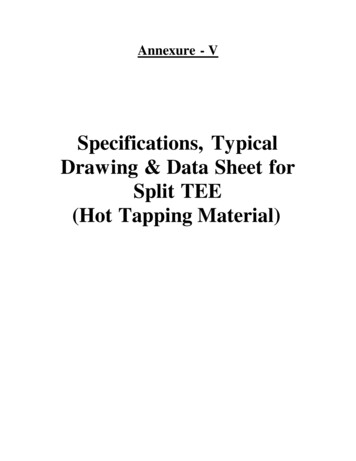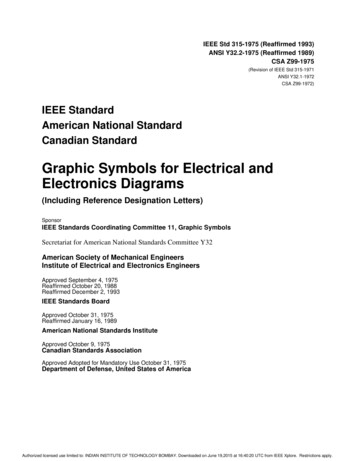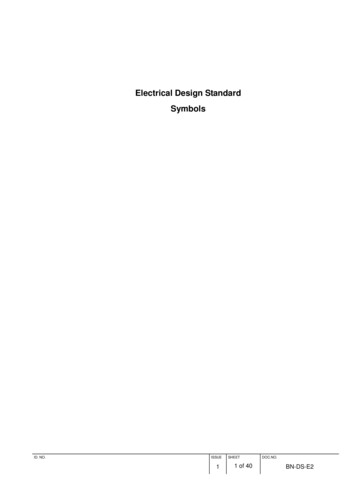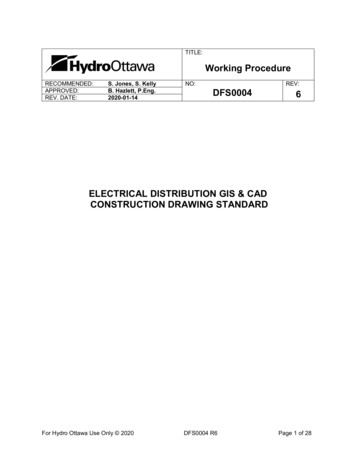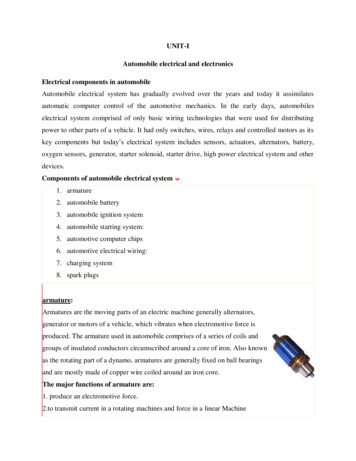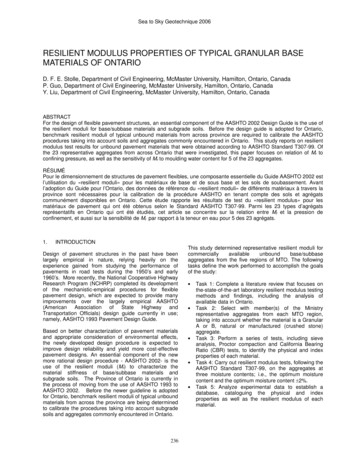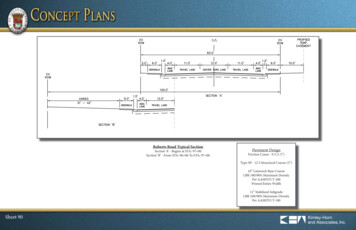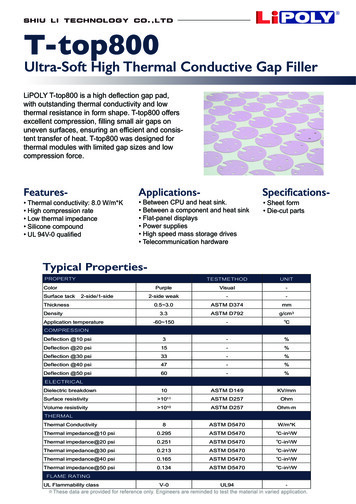
Transcription
TYPICAL ELECTRICAL DRAWING SYMBOLS AND CONVENTIONSELECTRICAL SYMBOLS1
2
3
4
5
INDICATORS & ALARMSRELAYS6
ELEMENTARY DIAGRAM CONNECTIONSWIRE NUMBERING7
8
ABBREVIATIONS9
ANSI/IEEE Standard Device Numbers1 - Master Element2 - Time Delay Starting or Closing Relay3 - Checking or Interlocking Relay4 - Master Contactor5 - Stopping Device6 - Starting Circuit Breaker7 – Rate of Change Relay8 - Control Power Disconnecting Device9 - Reversing Device10 - Unit Sequence Switch11 – Multifunction Device12 - Overspeed Device13 - Synchronous-speed Device14 - Underspeed Device15 - Speed - or Frequency-Matching Device20 - Elect. operated valve (solenoid valve)21 - Distance Relay23 - Temperature Control Device24 – Volts per Hertz Relay25 - Synchronizing or Synchronism-Check Device26 - Apparatus Thermal Device27 - Undervoltage Relay29 - Isolating Contactor30 - Annunciator Relay32 - Directional Power Relay36 - Polarity or Polarizing Voltage Devices37 - Undercurrent or Underpower Relay38 - Bearing Protective Device39 - Mechanical Conduction Monitor40 – Loss of Field Relay41 - Field Circuit Breaker42 - Running Circuit Breaker43 - Manual Transfer or Selector Device46 - Reverse-phase or Phase-Balance Relay47 - Phase-Sequence Voltage Relay48 - Incomplete-Sequence Relay49 - Machine or Transformer Thermal Relay50 - Instantaneous Overcurrent51 - AC Time Overcurrent Relay52 - AC Circuit Breaker53 - Exciter or DC Generator Relay54 - High-Speed DC Circuit Breaker55 - Power Factor Relay56 - Field Application Relay59 - Overvoltage Relay60 - Voltage or Current Balance Relay62 - Time-Delay Stopping or Opening Relay63 - Pressure Switch64 - Ground Detector Relay65 - Governor66 – Notching or jogging device67 - AC Directional Overcurrent Relay68 - Blocking or “out of step” Relay69 - Permissive Control Device71 - Level Switch72 - DC Circuit Breaker74 - Alarm Relay75 - Position Changing Mechanism76 - DC Overcurrent Relay78 - Phase-Angle Measuring or Out-of-Step Relay79 - AC-Reclosing Relay81 - Frequency Relay83 - Automatic Selective Control or Transfer Relay84 - Operating Mechanism85 - Carrier or Pilot-Wire Receiver Relay86 - Lockout Relay87 - Differential Protective Relay89 - Line Switch90 - Regulating Device91 - Voltage Directional Relay92 - Voltage and Power Directional Relay94 - Tripping or Trip-Free RelayB – BusF – FieldG – Ground or generatorN – NeutralT – Transformer
Electrical BasicsSample Drawing IndexBasics 1Overall Plant 1-LineBasics 27.2 kV Bus 1-LineBasics 34.16 kV Bus 1-LineBasics 4600 V 1-LineBasics 5480 V MCC 1-LineBasics 67.2 kV 3-Line DiagramBasics 74.16 kV 3-Line DiagramBasics 8AOV Elementary & Block DiagramBasics 94.16 kV Pump SchematicBasics 10480 V Pump SchematicBasics 11MOV Schematic (with Block included)Basics 1212-/208 VAC Panel DiagramBasics 13Valve Limit Switch LegendBasics 14AOV Schematic (with Block included)Basics 15Wiring (or Connection) DiagramBasics 16Wiring (or Connection) DiagramBasics 17Tray & Conduit Layout DrawingBasics 18Embedded Conduit DrawingBasics 19Instrument Loop Diagram
Basics - 1Plant 1-Line
Basics - 27.2 kV One-Line
Basics - 34.16 kV One-Line
Basics - 4600 V One-Line
Basics - 5MCC One-Line
Basics - 6Three-Line
Basics - 7Three-Line
Basics - 8MOV Block DiagramBasics - 8MOV Elementary Diagram
Basics - 9PumpSchematic
Basics - 10480 V Pump Block DiagramBasics - 10480 V PumpSchematic
Basics - 11MOV Schematic
Basics - 12AC Panel Diagram
Basics - 13Valve Limit Switch Legend
Basics - 14AOV Schematic
Basics - 15Wiring Diagram
Basics - 16Wiring Diagram
Basics - 17Tray & Conduit Layout
Basics - 18Embedded ConduitLayout
Basics - 19Instrument LoopDiagram
ANSI/IEEE Standard Device Numbers 1 - Master Element 2 - Time Delay Starting or Closing Relay 3 - Checking or Interlocking Relay 4 - Master Contactor 5 - Stopping Device 6 - Starting Circuit Breaker 7 – Rate of Change Relay 8 - Control Power Disconnecting Device 9 - Reversing Device 10 - Unit Sequence Switch 11 – Multifunction Device

